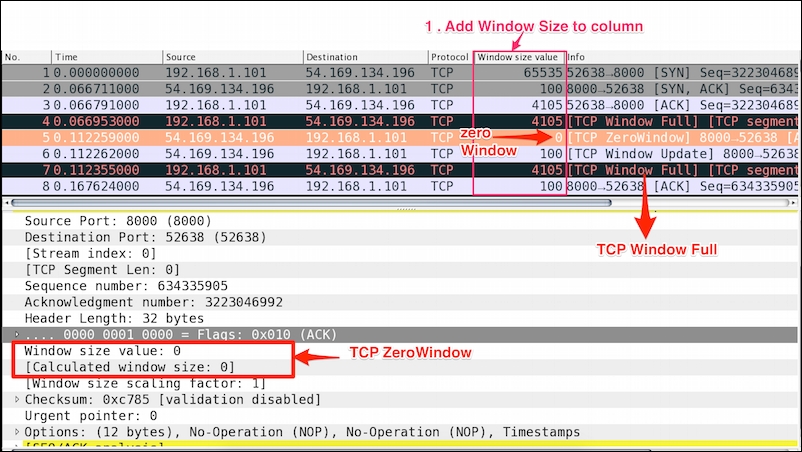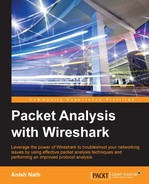Wireshark has a built-in filter, tcp.analysys.flags, that will show you packets that have some kind of expert message from Wireshark; tcp.analysis.flags is shown in the TCP section of the Packet Details pane. Under that, expand SEQ/ACK analysis then expand TCP Analysis Flags. This will tell you exactly what triggered tcp.analysis.flags. A few examples include:
- TCP Retransmission
- TCP Fast Retransmission
- TCP DupACK
- TCP ZeroWindow
- TCP ZeroWindowProbe
TCP makes the transmission of segments reliable via sequence number and acknowledgement. When TCP transmits a segment containing data, it puts a copy on a retransmission queue and starts a timer; when the acknowledgment for that data is received, the segment is deleted from the queue. If the acknowledgment is not received before the timer runs out, the segment is retransmitted. During TCP retransmission, the sequence number is not changed until the retransmission timeout happens.
Open the example tcp-retransmission.pcapng in Wireshark and add a Sequence number column, as shown in the following screenshot:

As you can see in the preceding screenshot:
- After sending
tcp.seq == 1870089183a lot of TCP retransmission occurs - A lot of TCP Retransmission can result in operation timeouts
For another example, open the file syn_sent_timeout_SSH.pcapng in Wireshark, and observe the TCP retransmission flow.
The steps to reproduce the TCP retransmission are as follows (this lab is performed in CentOs6 using the telnet and nc command utilities):
- Set up two machines: HOST-A (Server) and HOST-B (client).
- On HOST-A start the server and configure the firewall rule as shown:
[bash ~]# iptables -A OUTPUT -p tcp --dport 8082 -j DROP [bash ~]# iptables save [bash ~]# nc -l 8082
- On the HOST-B machine open Wireshark, start capturing the packets, and choose display filter
tcp.port==8082. - On the HOST-B machine run the telnet command; change the IP information to your actual server location:
[bash ~]telnet 128.136.179.233 8082 - Verify the TCP state on the HOST-B machine:
bash$ netstat -an | grep 8082 tcp4 0 0 192.168.1.101.64658 128.136.179.233.8082 SYN_SENT
- In Wireshark, view and analyze the captured packet using the previous step.
In order to solve operation timeouts, verify the ACL configuration; it allows the incoming packet from the source IP.
Open the tcp_zero_window.pcapng file in Wireshark and add tcp.window_size_value to the column.
The TCP window size represents how much data a device can handle from its peer at one time before it is passed to the application process.

As shown in the preceding screenshot:
- Add
window_sizeto the Wireshark column and look for the packet wheretcp.window_size=0. - TCP headers with a window size of zero indicate that the receiver's buffers are full. This condition arrives more rapidly for writes than reads; in this condition
tcp.window_size_valueis set to0andtcp.window_size == 0. - The segment is exactly 1 byte.
Troubleshoot the ZeroWindow condition:
Wireshark marks a packet as Window Update when the window size has changed. A Window Update is an ACK packet, and only expands the window; this is normal TCP behavior.
Open the tcp_window_update.pcap file in Wireshark and observe that a TCP Window Update event is set, as shown:


